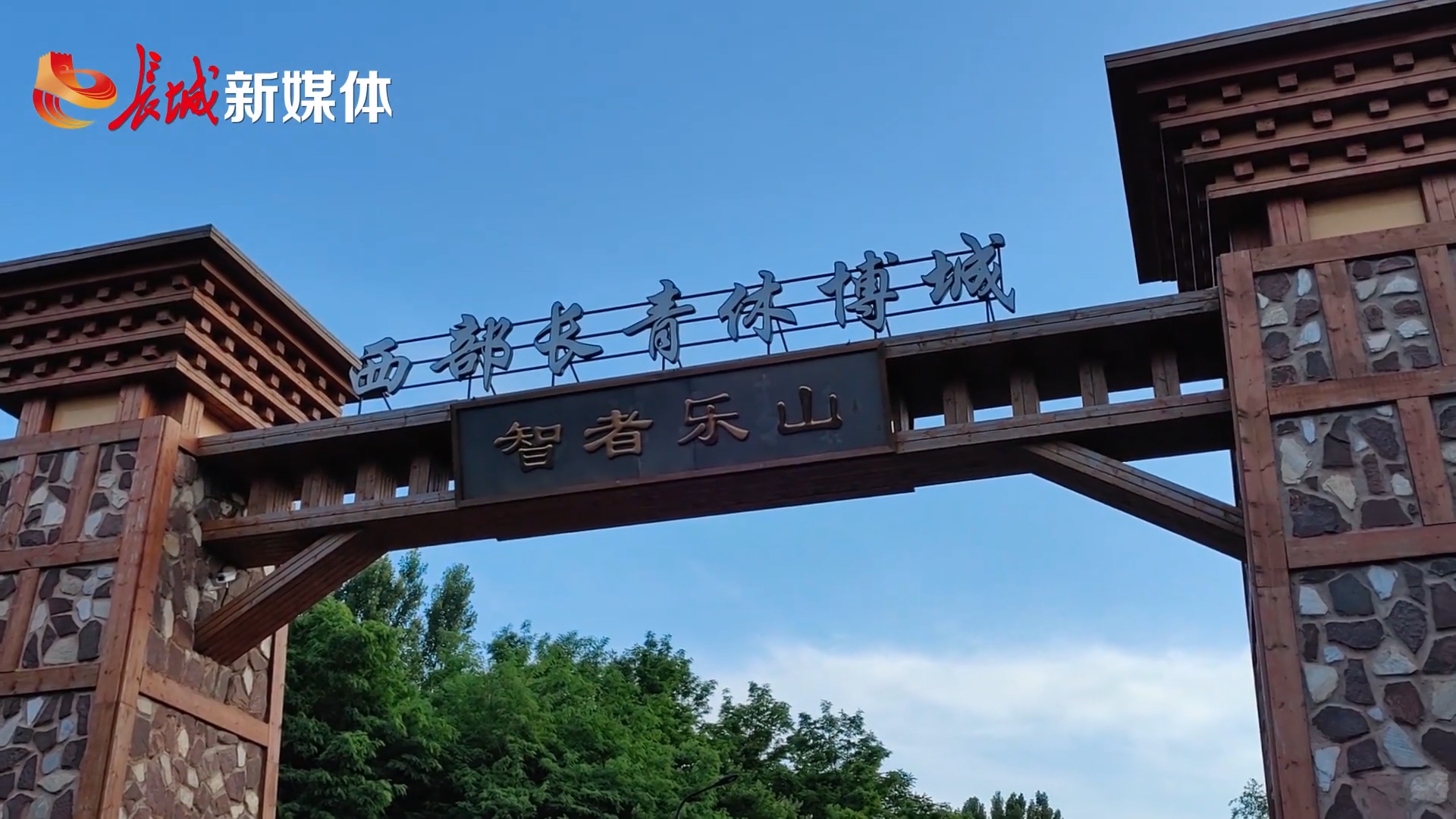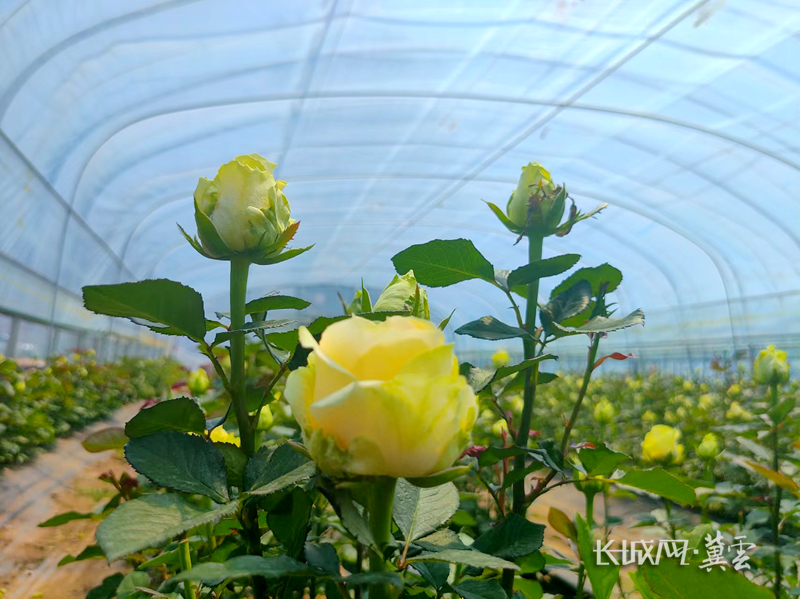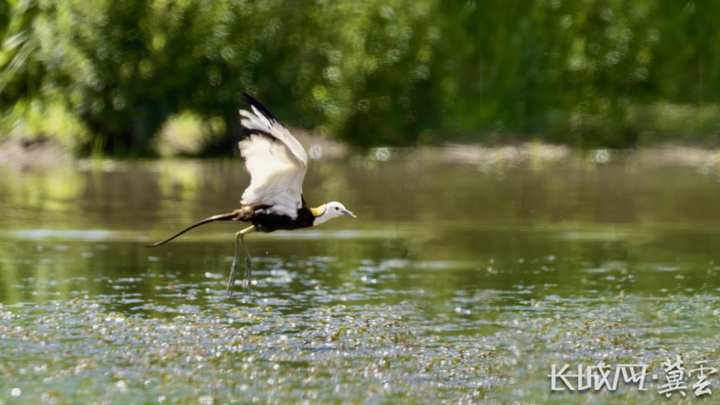Recently, several pheasant-tailed jacanas were spotted resting and foraging at Baiyangdian Lake in the Xiong’an New Area, north China’s Hebei Province. This has further indicated that the ecological environment of Baiyangdian Lake has kept improving.
Jacanas will have a long and beautiful tail during their breeding period. And because it can move around on the surface of the water only by flapping its wings, the bird earned itself the nickname of “the fairy on water.”
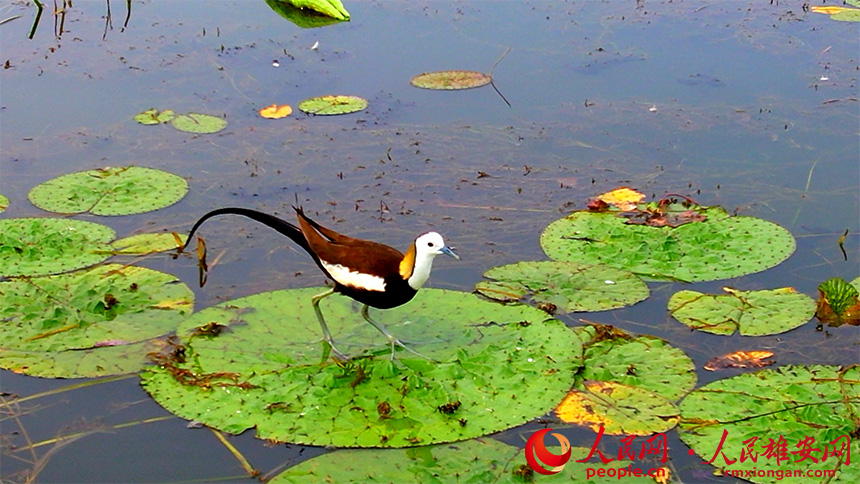
A jacana stands on a leaf of a gorgon fruit floating on the surface of Baiyangdian Lake in the Xiong’an New Area, north China’s Hebei Province. (Photo by Gao Teng)
Jacanas often appear in places where the water quality is considered good and the ecological environment is considered sound. Over the years, the species has seen its habitat gradually shrink in China. In 2021, the rare bird was listed as a wild animal under second-class state protection in China.
Since it was established five years ago, the Xiong’an New Area has continuously ramped up its efforts to restore and protect the ecological environment of Baiyangdian Lake, while taking urgent steps to restore and build an accommodating habitat for various bird species. It has gradually built a biodiversity protection and monitoring system after many years of effort, having provided a sound environment for birds, fish and zoobenthos that call the locality their home.
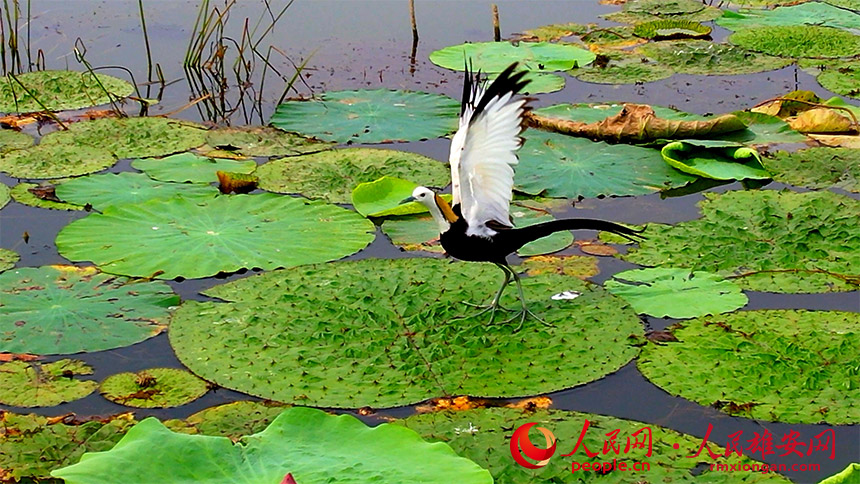
A jacana flaps its wings before taking off from a leaf of a gorgon fruit floating on the surface of Baiyangdian Lake in the Xiong’an New Area, north China’s Hebei Province. (Photo by Gao Teng)
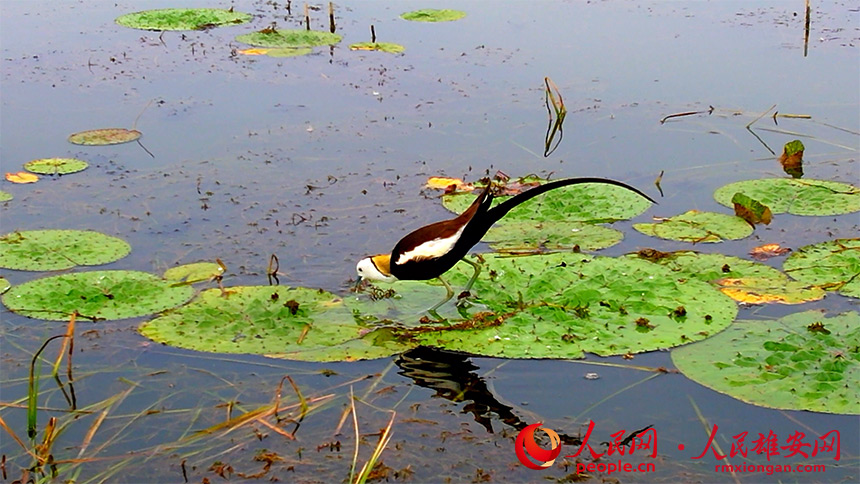
A jacana forages amongst the leaves of gorgon fruit in the pristine waters of Baiyangdian Lake situated in the Xiong’an New Area, north China’s Hebei Province. (Photo/Gao Teng)
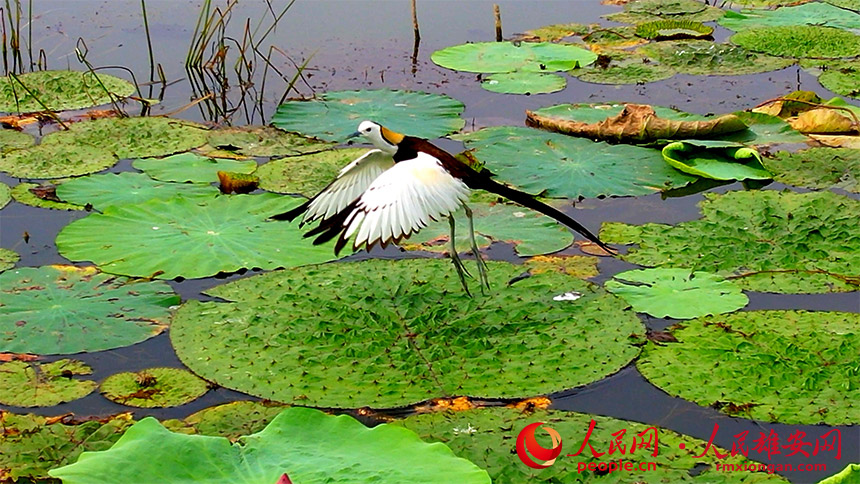
A jacana flaps its wings before taking off from a leaf of a gorgon fruit floating on the surface of Baiyangdian Lake in the Xiong’an New Area, north China’s Hebei Province. (Photo by Gao Teng)
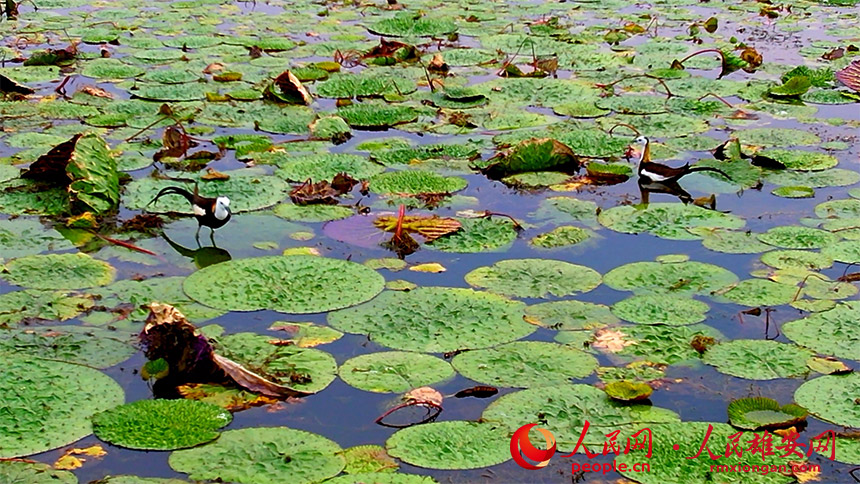
Two jacanas rest in the pristine waters of Baiyangdian Lake situated in the Xiong’an New Area, north China’s Hebei Province. (Photo by Gao Teng)




